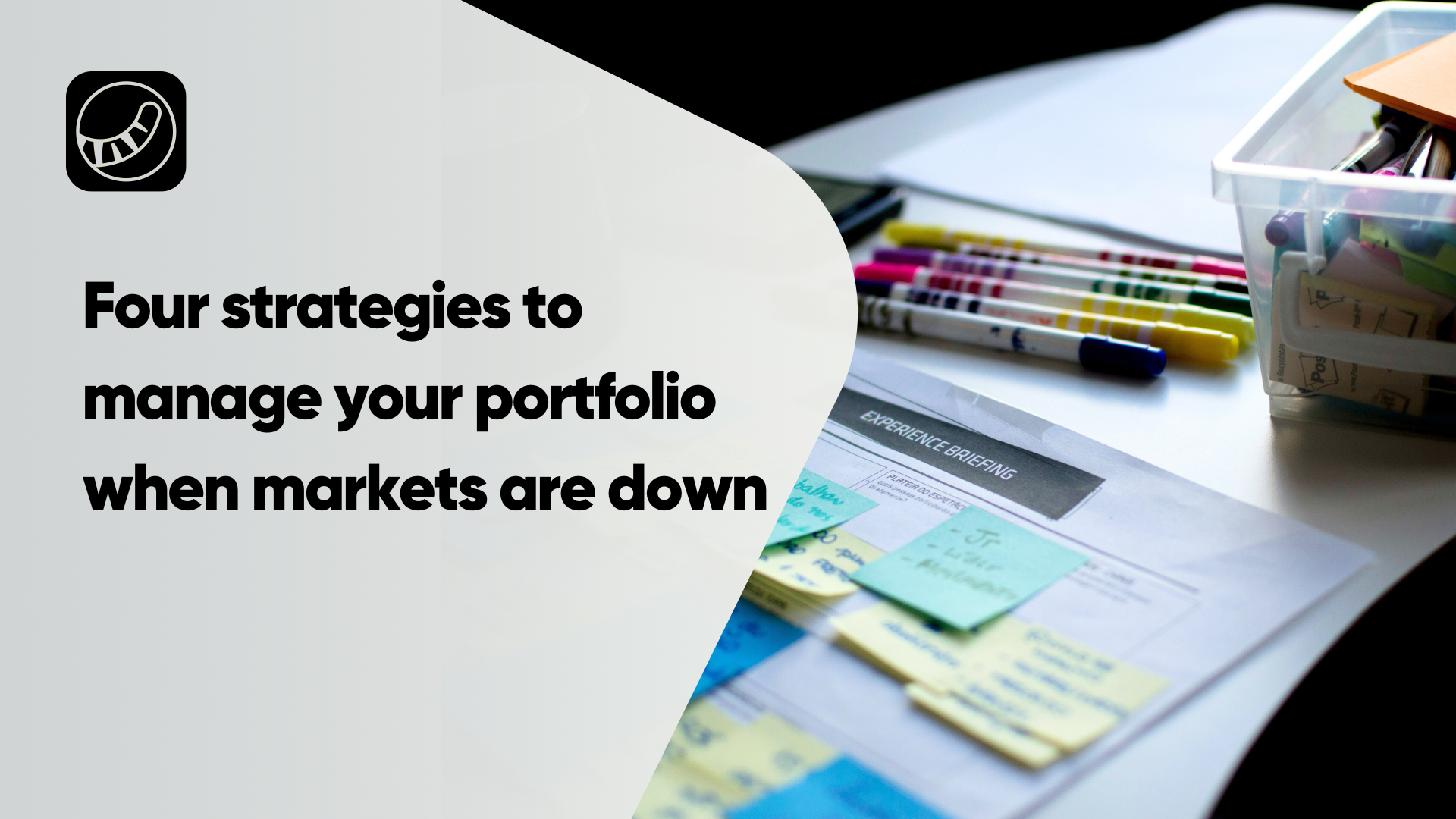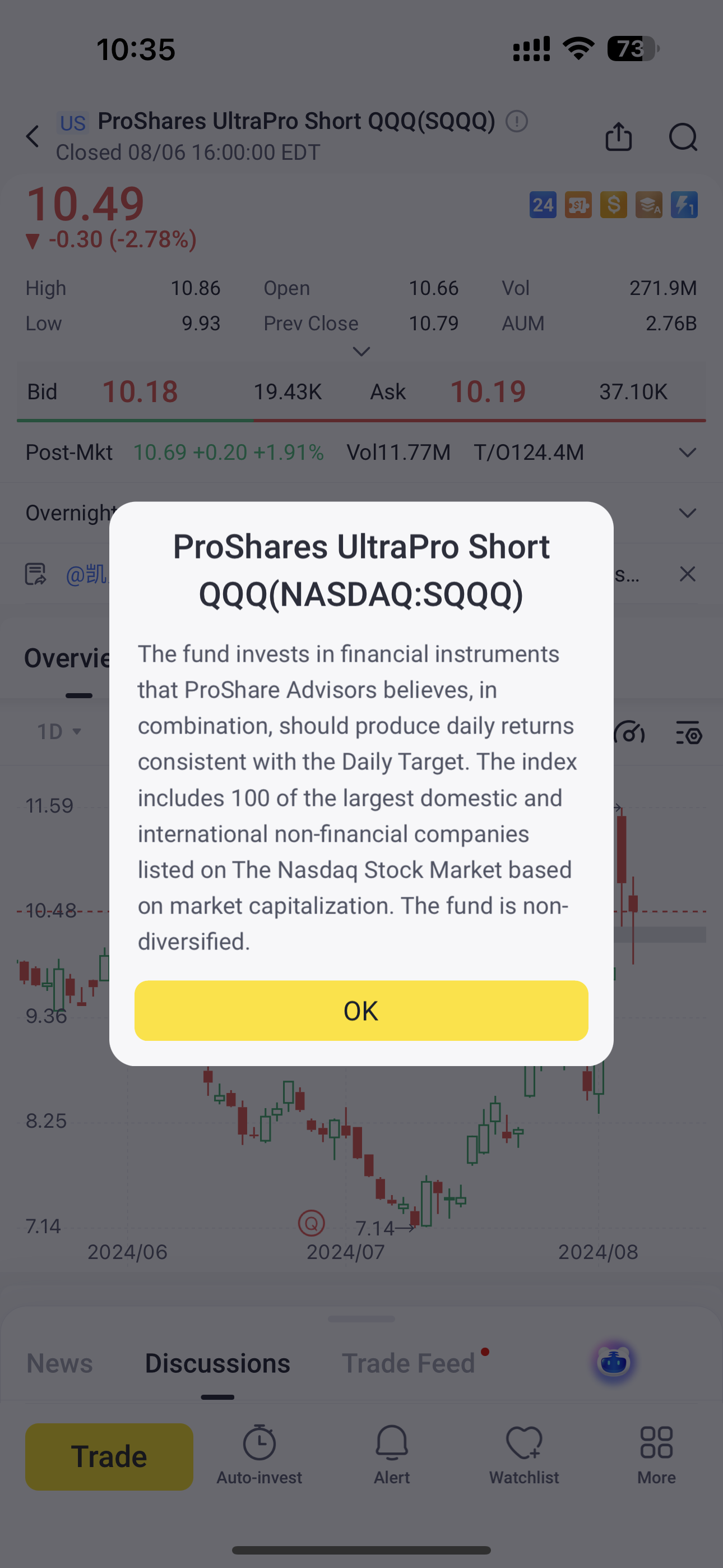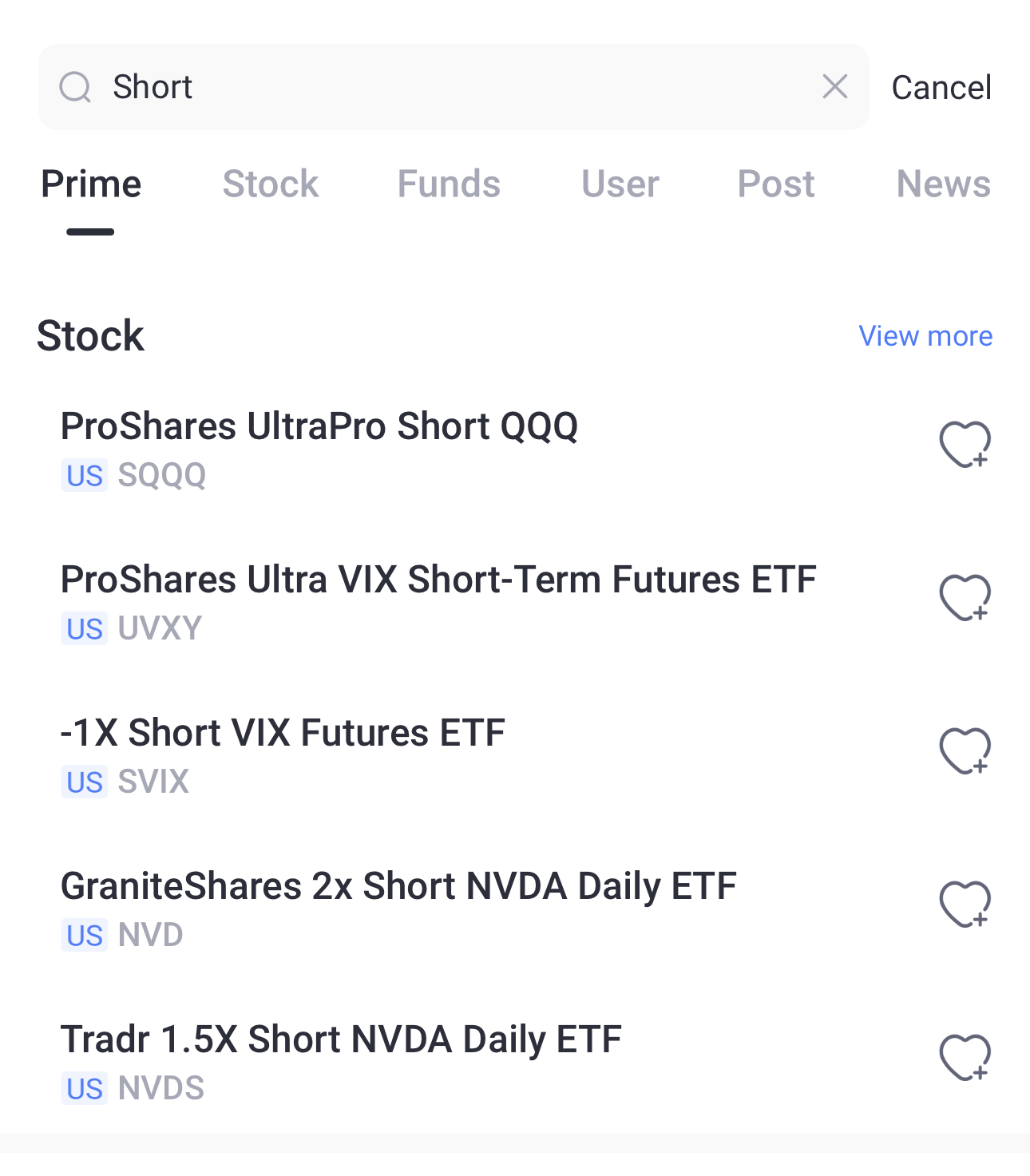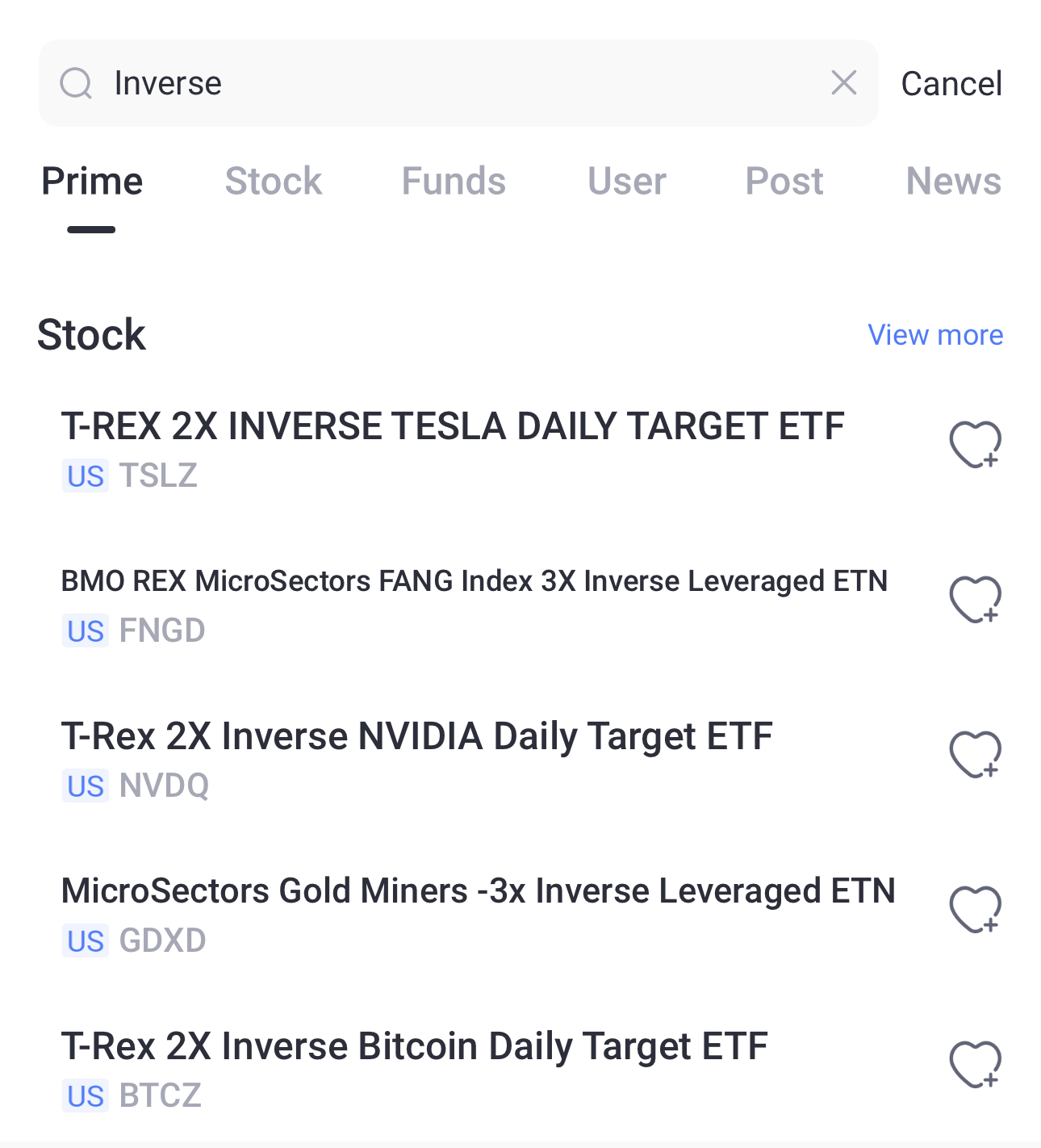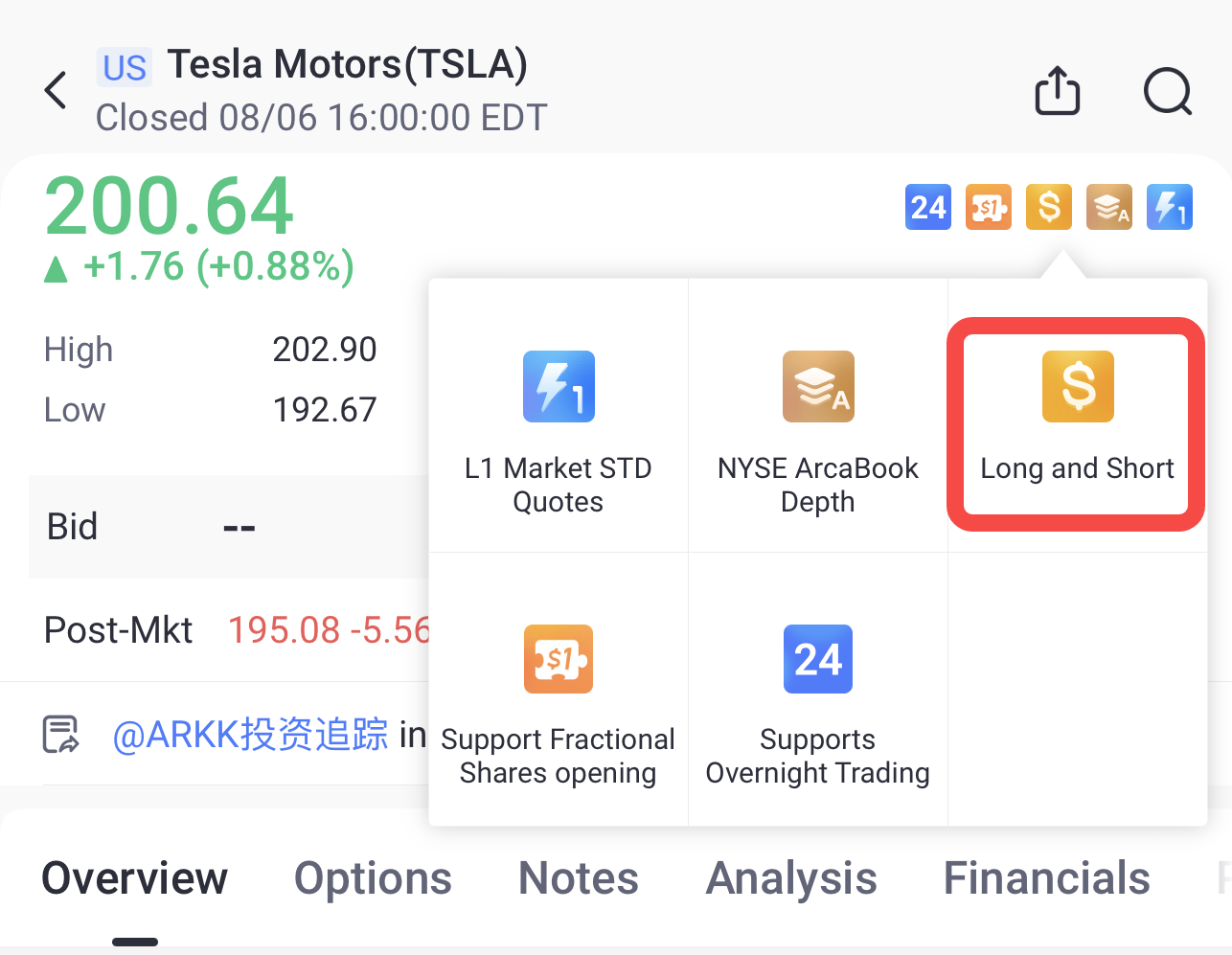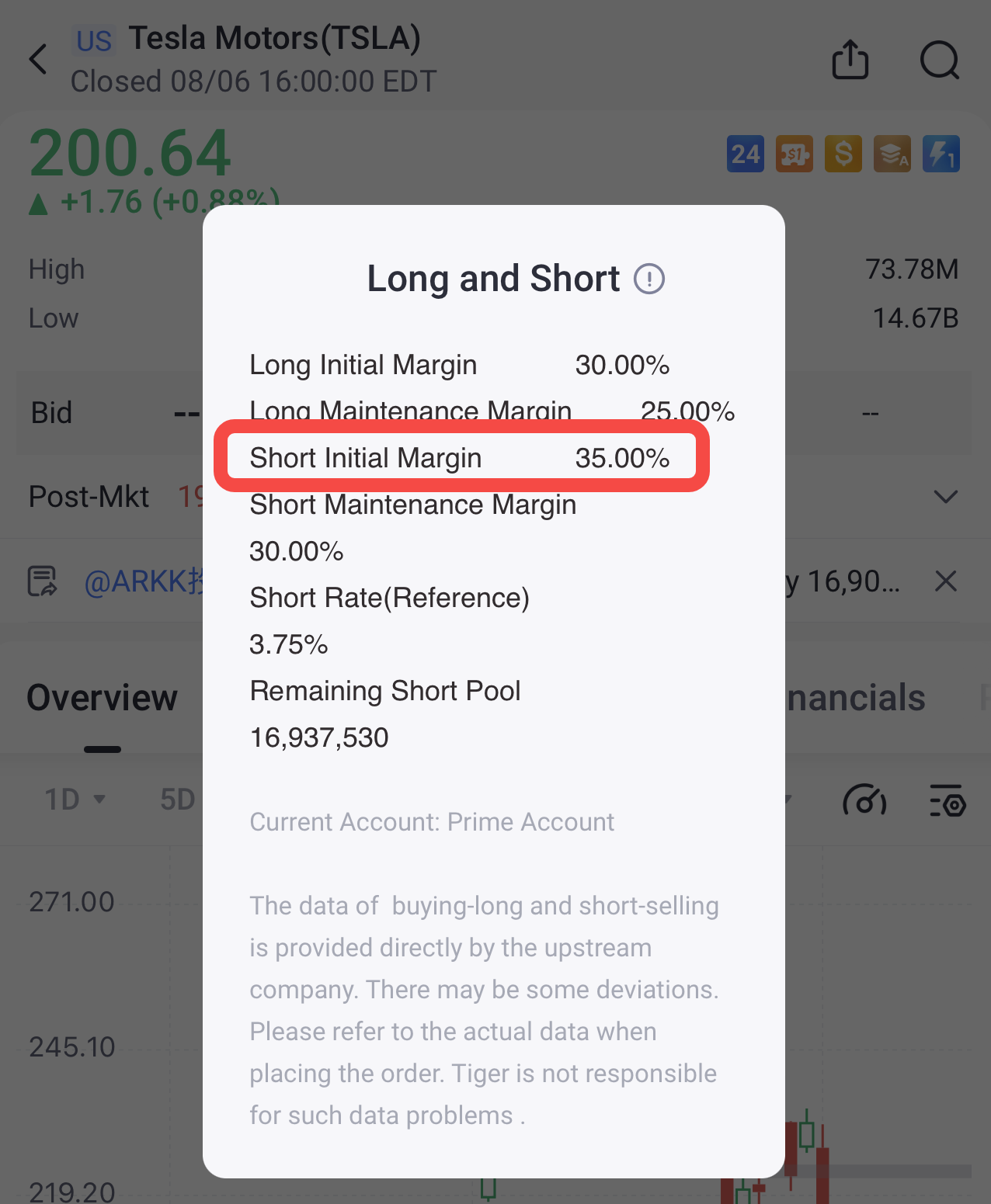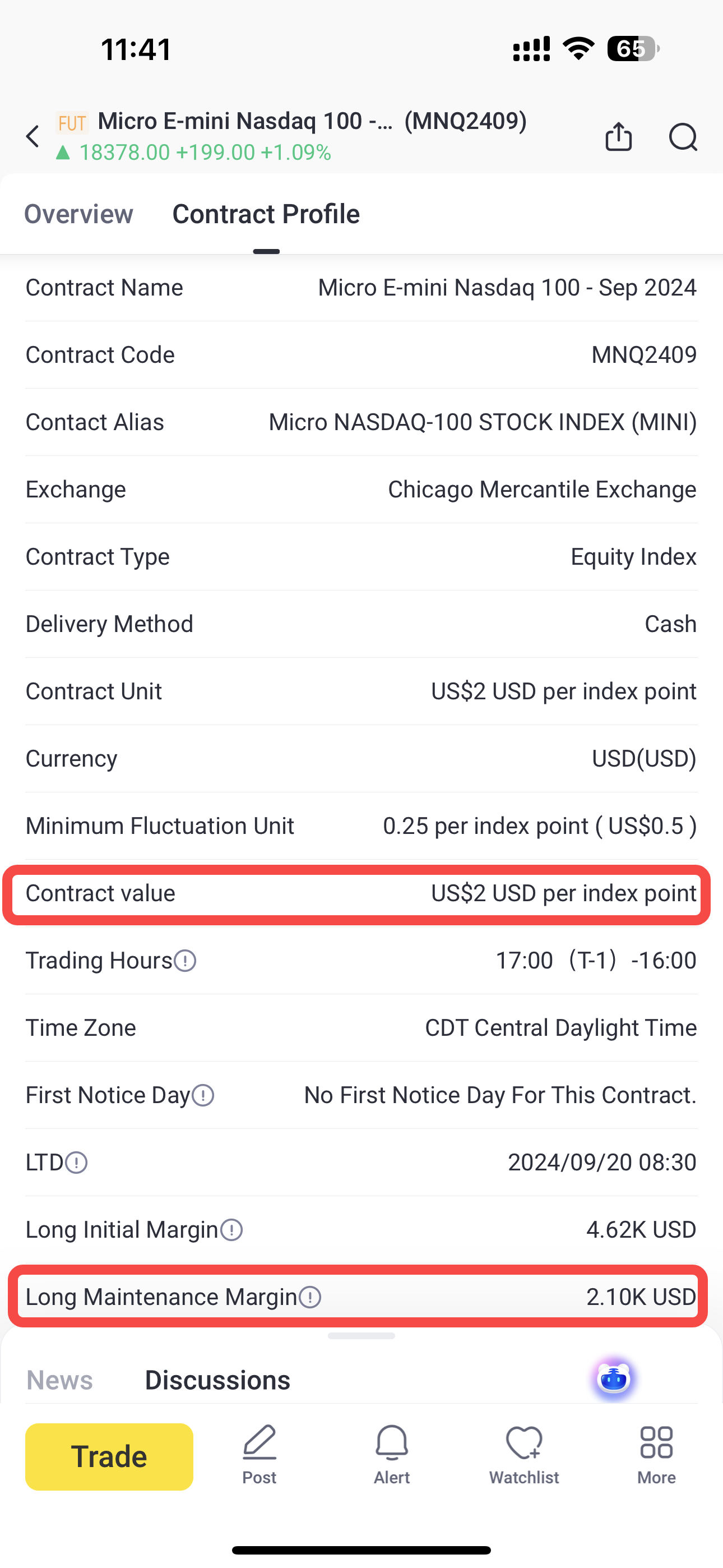On 5th August 2024, markets saw a big drop, triggered by poor U.S. job data and a rising yen, heightening concerns of an economic slowdown.
Amid the recent market uncertainty, investors have been actively seeking ways to protect their portfolios during the downturn. Here we outline four key methods of hedging risk when markets trend downwards, each with varying levels of complexity, offering insights into strategies that could protect your portfolios during economic declines.
1. Inverse exchange-traded funds (ETFs)
Advantage: Easy access, precise targeting, capped losses, profit potential in adverse market conditions.
Risk: Limited selection, not suitable for long-term holds, higher fees, daily recalibration, variable liquidity.
An inverse ETF is designed to move in the opposite direction of the asset it tracks. This means when the target asset's price drops, the ETF's price increases, and vice versa. For instance, if an inverse ETF tracks the S&P 500 index, it will gain value as the index decreases.
Popular inverse or short ETFs like ProShares UltraPro Short QQQ (SQQQ), which provides three times the leveraged daily inverse exposure to the tech-heavy Nasdaq 100 index, and ProShares UltraShort S&P500 (SDS), which offers double the leveraged daily inverse exposure to the S&P 500 index, are available. To explore the variety of inverse ETFs we offer, simply search for "short" or "inverse" on Tiger Trade.
2. Manage risk using options
Advantage: Limited financial risk, hedging flexibility, and customizable strategies, profit potential in adverse market conditions.
Risk: Complex strategy, time-sensitive execution, vulnerability to market volatility, and potential for significant losses.
Buying a put contract for a stock that you think might decline in value is perhaps the most straightforward method to manage risk. When using options, you don't need to borrow the shares unlike with short selling. Instead, you buy an options contract which grants you the right, though not the obligation, to sell the underlying stock at a predetermined price (the "strike price") on or before a specific future date (the "expiration date").
Should the stock's price decline before the expiration date, you can exercise your option to sell the stock at a higher strike price, securing the difference as profit. If the stock’s price doesn’t fall, you have the option to let the contract expire, with your only loss being the premium paid for the option.
Using NVDA as an example (note: this is not financial advice): On August 7, NVDA's price is $101.55. If you expect it to drop below $99 by August 16, you might choose a put option with a $99 strike price expiring on that date. Purchasing this option will cost $3.00 per share, totaling $300 for 100 shares. You’ll have the right to sell 100 NVDA shares at $99 each before August 16. You start to profit if NVDA’s stock price falls below $96 ($99 strike price minus $3 premium), excluding any transaction fees. Your potential profit increases as the stock price drops, but your maximum loss is limited to the $300 premium paid. You can also sell the put option before its expiration if its value increases, rather than exercising it.
3. Manage risk using stocks
Advantage: Simple process, low entry barriers, profit potential in adverse market conditions
Risk: High capital requirement, borrowing interest, unlimited loss potential.
The mechanism is simple: sell high, buy low. You borrow shares from your broker to sell them at a high price and then buy them back at a lower price to return to the broker. Here's a step-by-step guide to help you through the process:
Identify the Stock: Research and find a stock that you think might potentially decrease in value.
Check Borrow Availability: Ensure the stock is available to borrow from your broker. In Tiger Trade you can check the trading page, click on "short" at the top right to see the options for your position.
Place a Sell Order: Initiate a sell order for the stock you don't own. This process is similar to selling stocks you already have. The key difference is that your account will show a negative position, indicating you have sold shares you don't own (e.g., -100 shares of XYZ).
Monitor the Stock Price: After selling, keep an eye on the stock's price. You are aiming for the stock to drop, so you can buy it back at a lower price.
Buy Back the Stock: Once the stock reaches your target price, place a buy order to cover your position. This will close your negative position. Your profit or loss is the difference between your selling price and buying price.
Margin Requirements: Ensure your account has sufficient margin capacity to cover the value of the borrowed stock, and you will be charged interest on the margin loan. For example: the initial margin requirement for shorting Tesla might be 35%. So, if Tesla's stock price is $200, you need at least $70 in your account to short one share. The short selling interest rate, say 3.75%, indicates the cost of borrowing the shares. This rate can fluctuate based on the stock's availability.
4. Manage risk using futures
Advantage: No borrowing required, no interest costs, flexible trading options.
Risk: Higher entry threshold, expiration-related costs, potential for amplified losses.
Selling a futures contract will also be another way to hedge against expected price declines in various assets, including indexes like the S&P 500 or Nasdaq-100.
For example, if you're heavily invested in tech stocks but concerned about potential downturns and don't want to liquidate your shares, you could hedge by selling Micro E-mini NASDAQ-100 Futures (MNQ2409). The contract value of these futures is calculated by multiplying the index value, currently at 18,378.00, by $2. This makes the value of a single contract approximately $36,756 (18,378 x 2). The fluctuations of these futures mirror those of the NASDAQ 100 index, similar to the well-known QQQ ETF. However, the initial margin requirement for these futures is only $2,100 USD. This means you could control a $36,756 value of the NASDAQ 100 with just $2,100, offering significant leverage. Although more margin than the minimum is typically maintained to manage leverage effectively, trading futures requires significantly less capital and incurs lower transaction costs compared to trading equivalent ETFs like QQQ.
But keep in mind that futures trading carries significant risks. The high leverage can magnify both losses and gains. Only invest funds you can afford to lose, and carefully consider your investment goals and trading experience before participating.
Hedging Tools Comparison
Method | Complexity | Capital Requirement | Capital Efficiency | Risk Level |
|---|---|---|---|---|
Short Selling | Simple | Low | Low | Medium |
Inverse ETFs | Very Simple | Very Low | Low | Low |
Options | Complex | Low | High | Low |
Futures | Moderate | Moderate | High | High |
Overview
Strategies to hedge against market drops is not exclusively for the financial elite; it is a practical skill for any investor aiming to mitigate potential risks. You can adopt any of the above strategies with Tiger Trade. Please note that these methods should not be considered advice on short selling, which could be risky in the long term.
Disclaimer
Capital involves risk. Not financial advisement. Futures and options trading contains high risks, which may lead to losses more than your capital.
This advertisement has not been reviewed by the Monetary Authority of Singapore.

